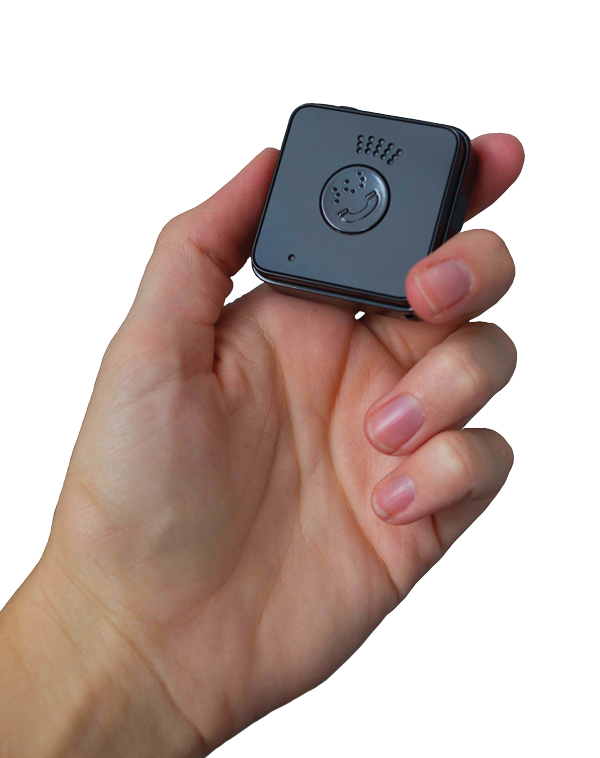
Every day, tens of thousands of Americans are turning 65, and three factors—longer life spans, rising health care costs and aging baby boomers—are driving the growth of this demographic. An overwhelming percentage of these aging adults desires to stay at home, maintaining an active, independent lifestyle for as long (and as safely) as possible. This sentiment should guide HME providers, health care professionals and all caregivers as they make decisions that have the potential to impact how seniors age. As this segment of the population continues to grow in 2015 and beyond, there will be new demands on home monitoring and PERS providers on the patient side, and new opportunities for revenue from the HME provider's perspective. Today's seniors are becoming more comfortable with technology and now demand more sophisticated, increasingly connected solutions to accompany them on their aging journey.
Monitoring as Preventive Care
"The Affordable Care Act has changed how both consumers and companies view health care," says Dan Maynard, president and CEO of grandCARE Systems. "The cost of health care continues to rise, especially for the aging populations that require more frequent and longer-term health care monitoring." A large part of the new legislation focuses on hospital readmission reductions and consequences for reactive versus proactive care, he says, and there are significant financial incentives for hospitals to actively work with Patient Safety Organizations (PSOs) to reduce costs associated with patient readmissions. Products like grandCARE incorporate resident information and support, captured resident data and professional caregiving tools, encouraging everyone in the caregiving support network to work together to achieve true patient-centered care. "A path of a patient/provider partnership results in better outcomes for both the patients and the caregivers because it creates greater efficiency for the caregiver staff by allowing virtual care, which results in fewer at-home visits," says Maynard. Virtual monitoring technology can potentially head off any serious issues, reducing the likelihood for patient readmissions. As a caregiving tool, grandCARE Systems is designed to reduce health care costs and improve outcomes by enabling family members, caregivers and health care professionals to remotely care for an individual living at home, regardless of geographic location. The system uses a large touch screen in the residence, which provides the individual with social communications, health monitoring, visual daily reminders and medication prompts. The easy-to-use interface means that no computer skills are needed for the resident to engage in all of the touch screen features. The system also supports virtual video visits, telehealth device recording (which takes vitals such as wireless blood pressure readings, weight, pulse oximerty, glucose and thermometer readings) and remote in-home activity sensing. Most recently, grandCARE Systems incorporated a new professional caregiver and user task management feature into their system, which allows the resident and caregiver to follow a daily schedule of tasks required to be checked off (such as medication administration, caregiver education, scheduled appointments, etc.). "This new feature enhances the resident engagement aspect by giving the resident a daily to-do list and establishes complete transparency for professional caregiving organizations by providing a task list that is required to be completed during home visits," says Maynard. Home monitoring and PERS technology now has the capability to better predict when a user may require a hospital transport or readmission. As the industry learns to better aggregate and analyze data from home monitoring and PERS solutions, HME providers, health care professionals and caregivers alike will be able to better understand exactly what a senior's needs are and take preventive steps to keep them safe at home and out of the hospital.
Independence with Intuitive Technology
"As technology continues to change, it is important to provide products and services that are user friendly and don't intimidate seniors so that they will actually use them," says Mindy Harrington, marketing manager at LogicMark. "It's a fine balance between technology and simplicity, especially with that demographic." LogicMark, a leader in two-way medical alert systems, recently introduced the Caretaker Sentry, a unit that supports a fully supervised waterproof pendant with a five-year battery. "This system addresses the issue where individuals were looking for a longer battery life and a pendant that is waterproof, so the pendant easily can be taken in the shower or bath without compromising the pendant," says Harrington. The two-way voice pendant allows the user to have a clear conversation with the central station if necessary. For further peace of mind, the pendants also communicate directly with the base stations every couple of hours to confirm the battery status and that the pendant is functioning properly. These factors, combined with the long battery life and go-anywhere waterproof convenience, means that the pendant never needs to be taken off. For those looking for simplicity and intuitive design outside the wearable market, full-home monitoring may be the right solution. BeClose, a Virginia-based company, uses a system of discrete sensors placed throughout the home that tracks activities and learns everyday routines. BeClose's sensors work on the cellular network and notice when something is amiss, such as a prolonged absence from bed or a missed meal. Family members and caregivers monitor daily activity and receive alerts about falls, missed medications and issues of concern. "Our system uses sensors that understand a typical route—they can pick up a change in behavior and act as a preventive measure by alerting a caregiver outside the home before an accident occurs in the first place," explains Liddy Manson, president of BeClose. This summer, BeClose will debut an even smarter system called Home Automation. This system makes independent living even more safe and convenient by putting household basics—garage doors, door locks, light switches, window shades—at the tip of the resident's (and, if necessary, the caregiver's) fingertips. "We are trying to create intelligence in the home," says Manson. "More people are adopting this technology in broader numbers because it is very intuitive, and it helps both the homeowner and the caregiver keep an older adult in their home."
Products for On-the-Go Seniors
The disappearance of traditional landlines is also a growing factor in the home monitoring/PERS market. "As homeowners are getting away from the typical house phone—usually for the sake of convenience or to save money—they no longer have phone lines to support the standard or traditional PERS," says Mark Jeanmaire, director of sales at Alert Sentry. "The mPERS (mobile PERS) is for active individuals who are out and about." Alert Sentry recently introduced a product named the iSAFE Mobile Responder, a pendant that can be used both in and around the home, or anywhere else that active client might be, with the single push of a button. "No phone line is needed, and it offers two-way voice communication with a UL-certified call center that knows the client's particulars," adds Jeanmaire. On-the-go mobile monitoring for active seniors is the way of the future, agrees Greg Gordon, vice president and chief marketing officer for home monitoring at Philips Healthcare. "Philips Lifeline understands that seniors live active lives and want to extend the protection and peace of mind that PERS offers outside the home," says Gordon. "This mobile solution allows them to continue doing the activities they love with the added confidence that if they find themselves in an emergency situation, they can get help and help can find them." Philips Lifeline—a company that offers a suite of solutions designed to empower seniors to remain independent throughout their aging journey—recently introduced GoSafe, a mobile personal emergency response system that is equipped with up to six location technologies, two-way voice communication and AutoAlert fall detection technology. The location system ensures the user can be easily located, even if he or she is lost or confused. "Whether they are folding laundry at home or walking the dog in a local park, GoSafe—worn as a lightweight pendant with a long-lasting, rechargeable battery—offers users 24/7 access to trained response center professionals who can dispatch help to the right location." In addition to emergency and location services, mobile solutions have also extended to include anytime, anywhere access to trained nurses. Connect America, a full-service medical alert provider that offers traditional, cellular and mobile solutions that work both inside and away from the home, has recently introduced an innovative new nurse call service feature. "This service allows someone who may be outside of their home and away from their emergency button to still call and get basic medical questions answered, no matter where they may be," says Howard Teicher, vice president of new business development at Connect America. "The service also provides comfort to someone who would like to speak to someone about a nonmedical emergency without having to use the button and tie up a monitoring response center operator."
Making Sales Simple
 Alert Sentry's iSafe mobile system negates the need for a phone line.
Alert Sentry's iSafe mobile system negates the need for a phone line.The ease and immediacy of sales will be a huge profit driver for providers when it comes to home monitoring and PERS products in 2015, particularly as technology improves and home monitoring products become more intuitive. "PERS sales for the HME provider should become simpler as time progresses," says Teicher. "For them to have the ability to offer a simple plug-and-play unit for the customer takes the burden of installation off of them and limits the amount of serviceability required by them." When it comes to longer-term relationships between the HME provider and the client, Teicher recommends doing the homework. "HME providers can be more successful if they explore all of the options out there for them to get into the PERS business. We offer multiple programs that include no inventory models with high rates of revenue return for the HME provider, as well as models that allow providers to lease equipment and services from us but still bill the end-user directly." Providers should be aware of the potential for up-front costs and possible monthly recurring fees in exchange for support services. Another avenue for HME profit growth is as low-tech as it gets: the HME-to-patient relationship. According to Gordon, "Seniors want to be active participants in their care. When at all possible, decisions about care should be made with seniors, not for seniors." This partnership between provider and client will allow the resident to actively participate in his/her health and wellness, as well as furnish the HME provider with useful information to improve the resident/caregiver relationship. Gordon also suggests that HME providers need to understand what customers like about a particular home monitoring or PERS product, what they don't like and what would better enable them to live safely and independently. This will ensure that the provider is offering the most complete lineup of products to the patients they serve, and also that they are exploring all opportunities for customer satisfaction, profit growth and long-term customer retention.
